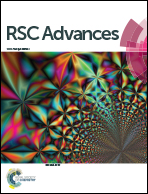Experimental study of the protective effect of mesosilica-supported 5-hydroxymethylfurfural on UV-induced aging of human dermal fibroblasts
Abstract
The drug 5-HMF (5-hydroxymethylfurfural, C6H6O3) is extensively studied for its antioxidative and anti-inflammatory properties. However, its unstable properties and biotoxicity restrict its use in skin care products and therapy. The present study was aimed at evaluating the potential of three-dimensional dendritic mesoporous silica nanospheres (3D-dendritic MSNs) as a topical carrier system for 5-HMF delivery. The encapsulation of the carrier also enhances the stability of the drug. Based on the results of Brunauer–Emmet–Teller (BET) analysis, Fourier transform infrared spectroscopy (FTIR), transmission electron microscopy (TEM), thermogravimetric analysis (TGA), dynamic light scattering (DLS), and UV-vis diffuse reflectance spectroscopy, drug delivery systems were successfully fabricated and the loading capacity (LC%) and entrapment efficiency (EE%) were also assessed. In vitro cell tests revealed the outstanding biocompatibility and inoxidizability of 3D-dendritic MSNs. There is no effect on the antioxidant properties of the drug. Therefore, mesoporous silica can be combined with 5-HMF and used as potential antioxidant medicine in cosmetic applications.



 Please wait while we load your content...
Please wait while we load your content...